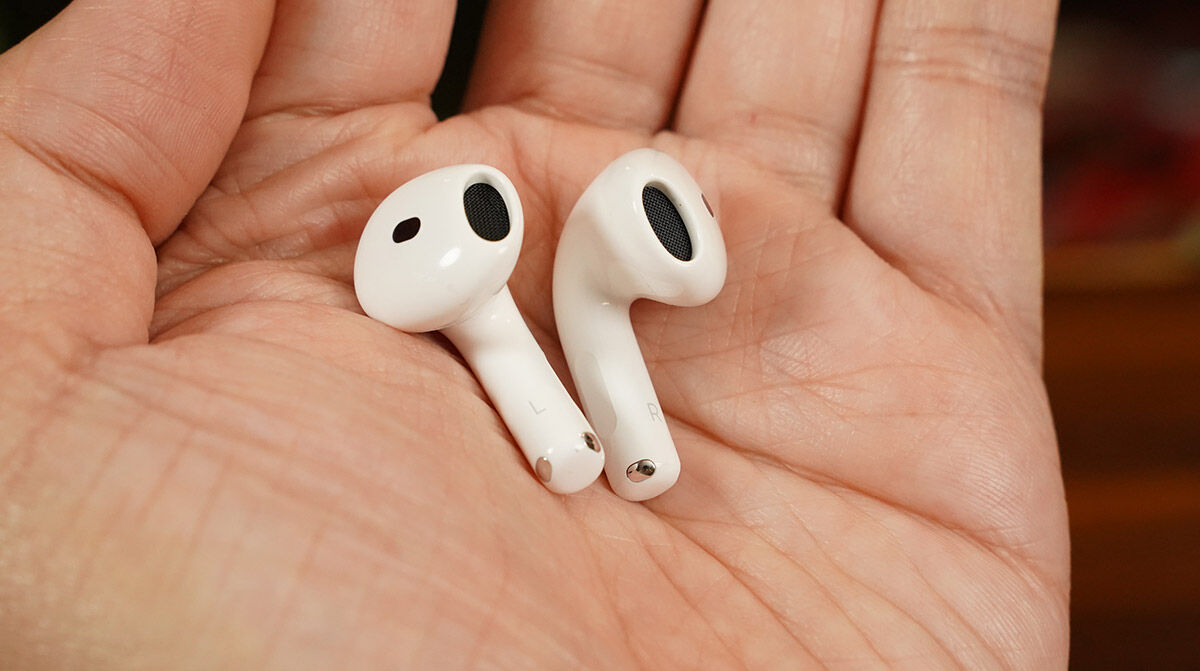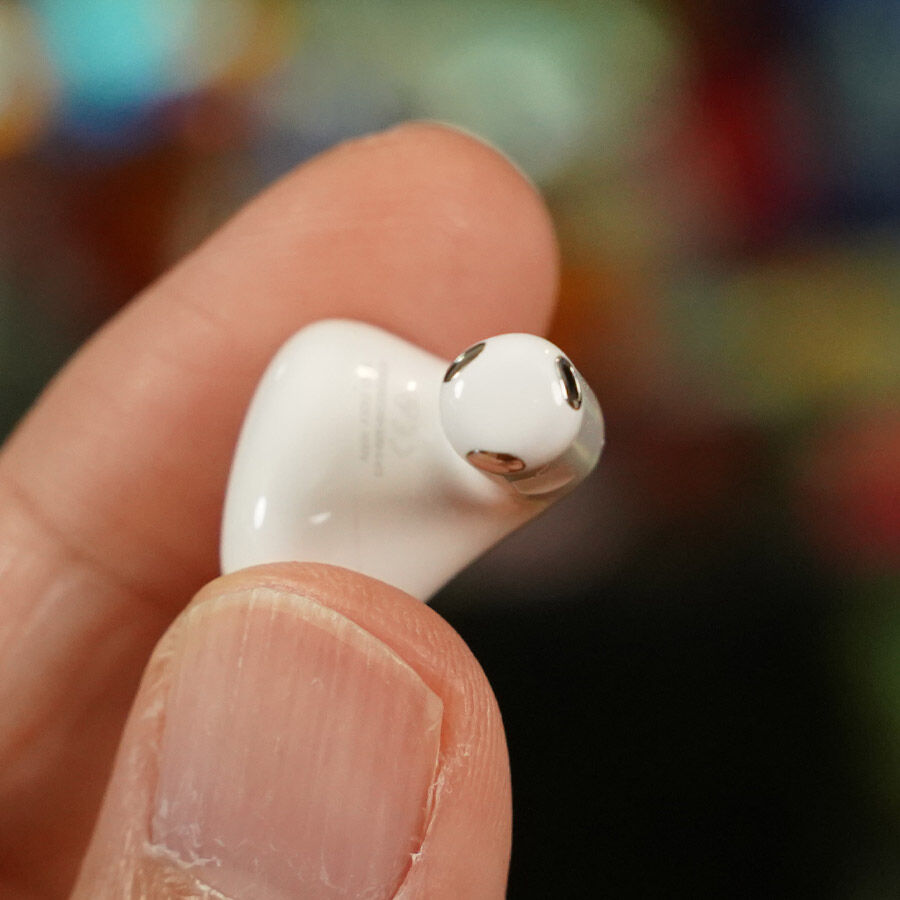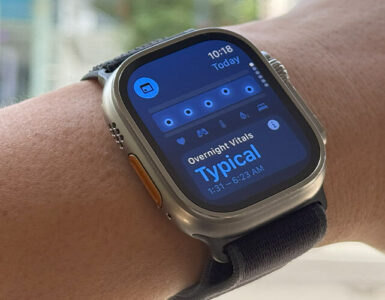Apple calls them the best selling earphones in the world, and since its debut in 2016, Apple has released three versions of the range – the entry-level AirPods with the latest AirPods 4, the AirPods Pro currently in their second generation, and the AirPods Max headphones.
What’s the difference between the AirPods and the AirPods Pro? The Pro models comes with Active Noise Cancellation or ANC, and are in-ear, while the AirPods are on ear, where there isn’t a snug fit and it’s design to rest on the crevice of your ear. Given Apple’s preferred terminology, they call it an open-ear design vs an in-ear design (with silicone tips).

At S$199, these are one of the most affordable earphones from Apple and not that much more expensive when you compare it to other similar brands. These are also wireless and in 2016, it basically introduced the design that all brands have since copied, of a monitor connected to a stem that hung from your ear hole.
The AirPods 4 follows in that same design and comes in two versions – the regular and now, with ANC and the ANC model comes with a case that charges wirelessly, and both with a USB-C, and not a Lightning connector.
Apple has also used their latest H2 chip, current in its Pro models, on the AirPods 4, bringing greater adaptability to listening environments, while providing sharper audio while listening to music and taking calls. And all of it in a slightly smaller case ever, which not only charges faster but also lasts longer with up to 30 hours of listening time with the case, or put to 20 hours if you use it with ANC turned on. That’s 5 hours of listening time with the AirPods on a single charge, and 4 hours if ANC is turned on.
So you’re thinking, ANC with an open-ear device? How does that work? ANC technology basically reduces unwanted sound by using a second sound to cancel out the first, and it works well in a sealed environment that an in-ear earphone provides, as the seal already limits unwanted external audio from getting into your ear. It’s that feeling of a vacuum in your ear, where external audio around you is naturally eliminated and further enhanced by ANC.
The thing about open-ear earphones is that the seal is pretty much dependent on genetic lottery, where your ear shape will either agree or disagree with the seemingly one-size fits all design of the AirPods. If you’re lucky and both sides fit well, then ANC here will work like a dream, as the fit means there are very little gaps for audio to leak into your ear when the AirPods are worn.
In my case though, the right bud fits perfectly, but the left one is a bit loose. Which brings me to the ANC, where it was tested at an above ground train station and because one side didn’t have that desired fit, you can detect, feel and hear the ANC’s pressure from the counter soundwave fighting for its life because I couldn’t get a good fit. Again the way Active Noise Canceling works could be one of two methods, where either the microphones try to match external sounds in a method known as feedforward, or otherwise, it measures the sound heard through the earphones, and inverts and plays back the noise. The pressure you feel are those soundwaves from either of those two methods and while it’s not clear which method the AirPods are using, you’ll definitely feel and hear something that’s slightly present and somewhat uncomfortable.


While using them underground at 50 per cent volume and listening to easy stuff like TOTO’s I’ll Be Over You or Sabrina Carpenter’s Espresso, you’re still going to be able to hear train announcements and the sound of the train moving on the tracks, and sounds on the higher frequencies will cut through quite easily, including voices directly around you. However most other ambient sounds, like the train doors closing, people talking and the rustling of bags when people fiddle with them beside you are nicely canceled out.
If you raise the volume past 50, to about 70 – 90 per cent, you can easily get everything drowned out (duh!) though in my case, the sensation and sound of the ANC cutting in and out was still there in my right ear (again depending on your fit). But other than that, they are comfortable to wear, and it’s likely that like Apple’s other Airpods, you’ll probably quickly forget you’re wearing them too.
They’re not amazing at ANC because these aren’t in-ear devices that complement ANC, but Apple has done its best and those with a preference to not use in-ear earphones will find a lot of utility in this. Now, I may be going too hard on Apple for the one-size fits all design here, but it’s a genuine concern of mine and for many out there. My ears can also be an outlier and these would likely fit the majority of people out there so the recommendation is to visit and Apple Store and try it out if you can. Otherwise, it might be worth paying a little more, for the AirPods Pro Gen 2 and be on your way.

And, there are two reasons why I used my commute to test earbuds out, The first is that a majority of people use the train daily, and it’s an almost universal experience. Secondly, I can only experience pressure changes when underground and because I’m in Singapore, the deepest train line we have is the Downtown Line and parts of the Thomson East Line, and we’re talking like 30 to 45 meters underground. That’s around 98 to 147 ft, for those still on the Imperial System.
As much as the small case makes this easy to bring around, there’s also the concern of the smaller AirPods and they are as slippery as ever when you try to take them out of the case. It’s always better to empty them onto an open palm, instead of trying to pick them out on by one, especially if you have big fingers.
But they do sound great, with both the regular and the ones with ANC offering a warm soundscape with great details. Now there is definitely a difference between on and in-ear earphones, and it wouldn’t be fair to say that one sounds better than the other, especially since both the AirPods and AirPods Pro are using the same H2 chip for their audio performance. While the AirPod 4’s lacks punch because they are on-ear, both handle calls effectively, with the ANC contributing to clearer dialogue on the AirPods. It all boils down to personal comfort levels and preference, and price.
GEEK REVIEW SCORE
Summary
The regular AirPods 4 improve on the audio quality, both music and calls, of its predecessor, though the ANC option, at S$50 more, can be a hit and miss, and it really depends on the kind of fit you have.
Overall
8/10-
Aesthetics - 8/10
8/10
-
Build Quality - 8/10
8/10
-
Performance - 8/10
8/10
-
Value - 8.5/10
8.5/10
-
Geek Satisfaction - 7.5/10
7.5/10
Abandon Reason Know Only War! Zinho is a shooter fanatic still waiting for direct sequels to Black (2006) and Star Wars: Republic Commandos. He also truly believes that the Warhammer 40K universe can take on any franchise and destroy them. To think any different is heresy and punishable by Exterminatus.













